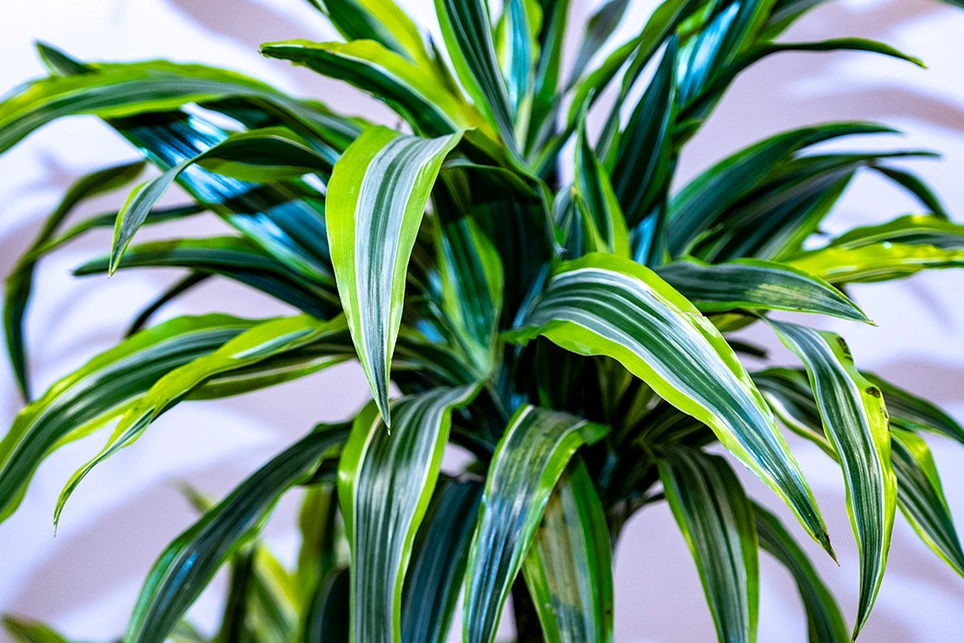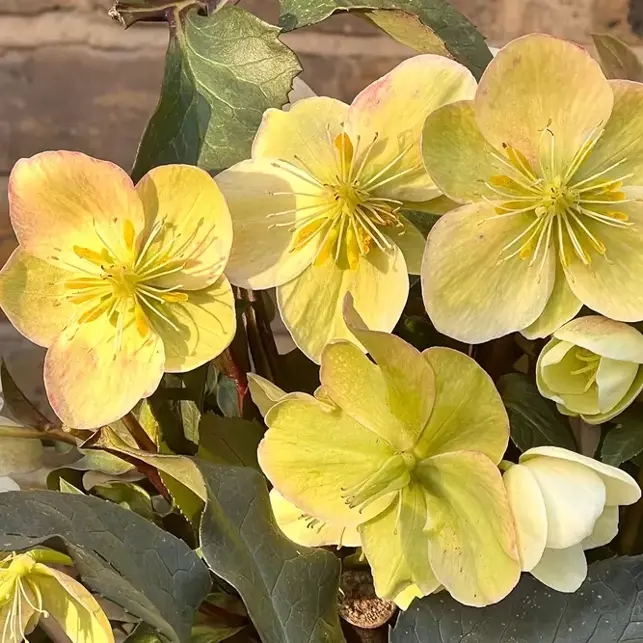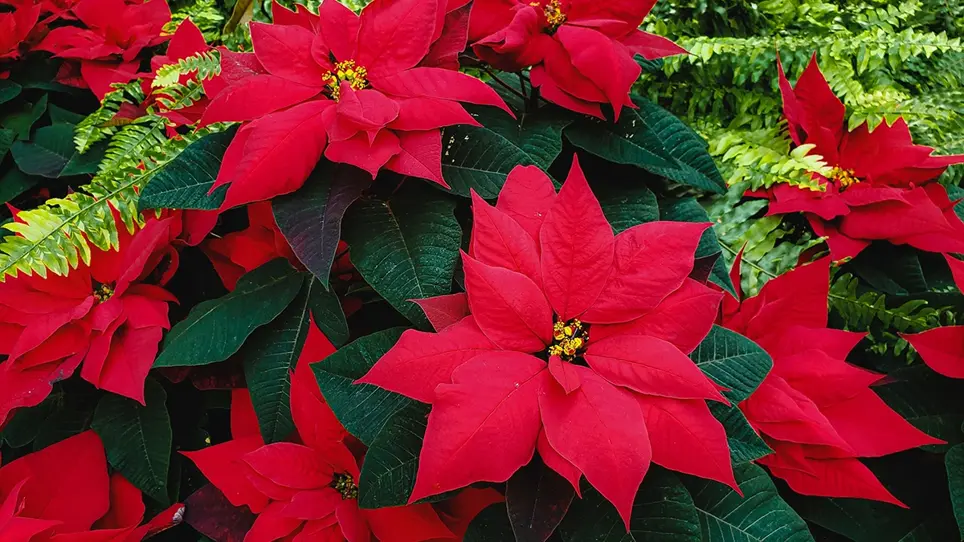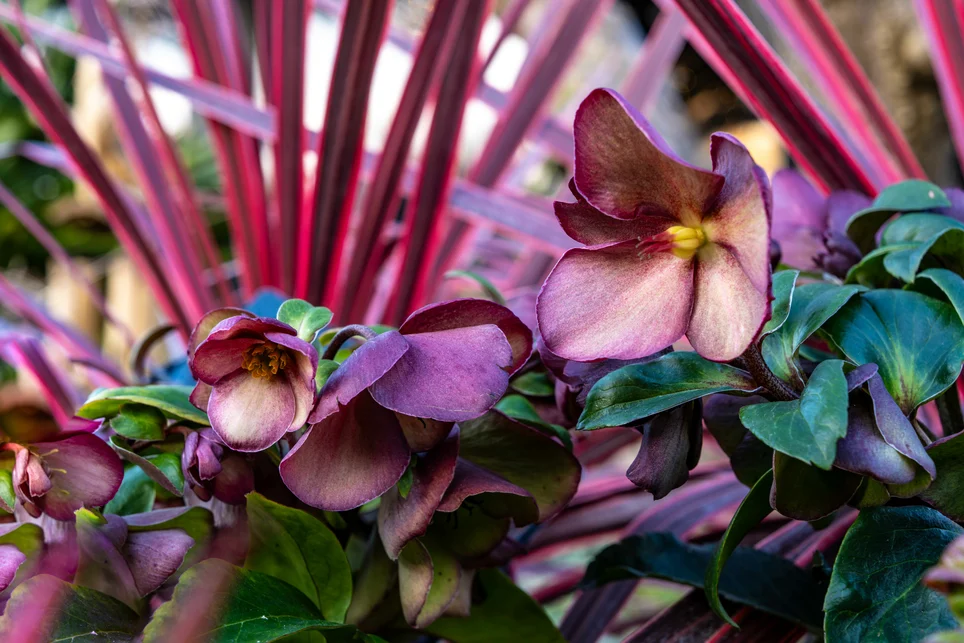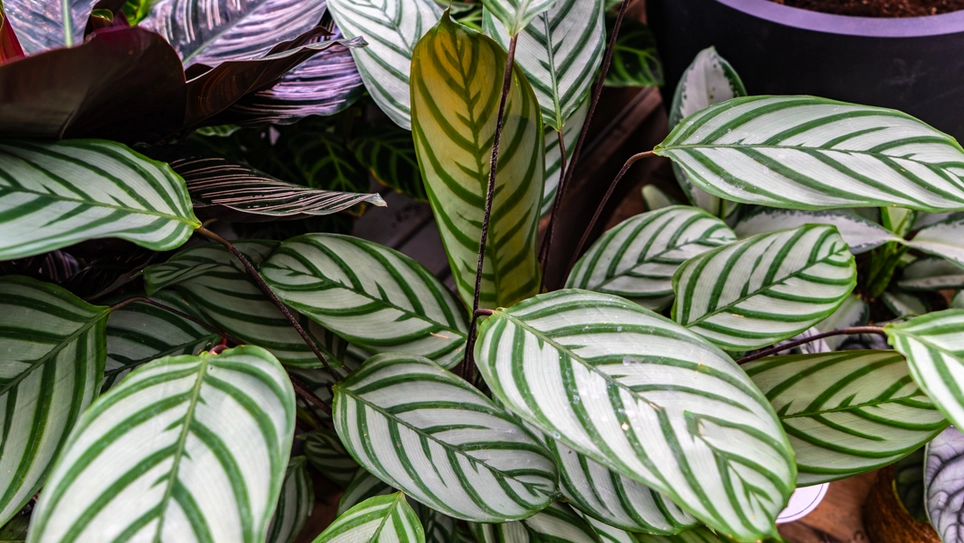
Often overlooked and taken for granted, Calathea is a standout genus with unique patterns and quirks that are quite startling. With personality traits that border on being a temperamental flatmate, it’s a plant that needs to be invited home with a warm welcome and an open heart.
The Emotional Intelligence of Calathea
Some houseplants sit quietly in the corner and even prefer to be left alone. Cacti like to be left on a sunny windowsill while you get on with things. Not Calathea. This is a plant that breathes, moves, and responds to its environment in a very noticeable way. Its leaves curl inward at night like hands in prayer, then unfurl at dawn in a rhythmic display of life. Living with Calathea is less like keeping a plant and more like sharing a room with a companion — temperamental at times, but impossibly beautiful.
Boma’s indoor plant team have noticed that in London homes, Calathea flourishes best where the air holds a little more moisture. If you live in leafier pockets of Highgate or Hampstead, where summer humidity rises gently between brick and canopy, your Calathea will thrive. But even in more urban corners of Archway, Gospel Oak or Tufnell Park, this tropical wonder can still glow — you just need to ensure that you prepare a place for it, and fit into your routine a little mist, care, and suitable attention.
Their leaf patterns are pure art. Painted with feathered brushstrokes, rippling stripes, or pixel-like mosaics, no two varieties feel quite the same. Some grow tall and upright like Makoyana or Orbifolia, their foliage like fans of green marble. Others stay low and wide, clustering in layered canopies of soft velvety foliage. Whatever your space, there’s a Calathea to match your living space– just pick one that’s right for you.
Charlotte, our indoor plant specialist at Boma, often describes Calathea as the plant with personality. “You have to meet it halfway,” she says. “Give it a little patience, a little respect, get to know it, and it becomes one of the most rewarding houseplants you’ll ever own.”
The Origins of a Living Work of Art
The incredible variation in Calathea — from the broad silvered waves of Orbifolia to the painterly precision of Makoyana or the tricolour vibrancy of Triostar — is no accident. These are rainforest natives, shaped by their surroundings over millennia. Found across tropical regions of Central and South America, especially in Brazil, Colombia, and deep into the Amazon basin, Calatheas evolved under dense forest canopies where shafts of filtered light danced through the trees and moisture clung to every surface.
Each variety reflects its own ecological niche. Orbifolia developed oversized leaves to capture every ounce of diffuse light in dim understories, while Makoyana, sometimes called the peacock plant, evolved intricate markings as natural camouflage among leaf litter and forest floor debris. Triostar, with its bold pink and cream marbling, likely benefited from varied pigmentation to reflect and absorb fragmented light differently across seasons and terrain.
These aren’t just ornamental quirks — they are evolutionary signatures. And replicating their natural world at home doesn’t require a rainforest, just a little empathy.
In urban flats or townhouses, the key is consistency and intention. They thrive in bright but indirect light, away from harsh afternoon sun. They adore moisture, not soggy soil, but steady ambient humidity. A pebble tray or a regular misting ritual makes a world of difference. Even better, group them with other leafy plants to create your own microclimate of calm.
Beyond light and moisture, Calatheas crave presence.
It’s a quiet truth that many Calathea owners already sense: these plants respond to attention. They feel the atmosphere of a room — the movement, the mood, the energy. Some say they’re more intuitive than people. Place them in a space filled with warmth, music, or quiet companionship, and they often thrive. Ignore them, and their leaves will quietly curl, waiting for someone to notice.
Caring for a Calathea is an act of a subtle relationship. You don’t water it so much as you check in. You don’t decorate with it — you live alongside it.
Varieties Chosen for London Homes
At Boma, Charlotte says that choosing the right Calathea isn’t just about shape or size — it’s about energy, light, and personality. Our collection this summer reflects that philosophy. Each variety has been selected not only for its beauty and resilience, but for its ability to thrive in the kinds of spaces our North London customers call home — from the sun-dappled rooms of Hampstead and Highgate to shaded hallway corners in Crouch End or compact balconies in Tufnell Park. We’ve even got some superb specimens that will set beautifully in a conservatory, if you’re blessed with one.
Whether you’re drawn to bold architectural foliage, delicate feathering, or rich tropical colour, these are the plants that connect with your interior, your lifestyle, and sometimes, in quiet moments, with you.
Meet the Calatheas of Boma
These are not just houseplants — they’re personalities. Each Calathea has a rhythm, a story, and a preference for how and where it likes to live. From bold centrepieces to quiet companions, here are the standout varieties you’ll find at Boma this summer.
Calathea Makoyana – The Elegant Conversationalist
Originating in Brazil’s shady forest floors, Makoyana’s leaves display a feathered tapestry of greens and purples, glowing in low light.
Loves: Bright, filtered light, high humidity.
Calathea Orbifolia – The Gentle Giant
With broad, silver-striped leaves, Orbifolia is native to Bolivia and thrives under diffuse light.
Loves: Spacious, bright indirect spots, regular misting.
Calathea Zebrina – The Velvet Performer
Velvety texture and bold stripes add depth and theatrical flair.
Loves: Bright, indirect north or east-facing rooms.
Calathea Kennedy – The Low-Light Dreamer
Deep green foliage with plum veining, quietly striking and forgiving.
Loves: Shaded corners, low-light areas.
Calathea Beauty Star – The Refined Dancer
Elegant elongated leaves streaked in silver and pink blushes.
Loves: Soft filtered light, regular humidity.
Calathea Insignis – The Jungle Romantic
Wild and lush with wavy lance-shaped leaves, deep greens and purples.
Loves: Warm, humid areas, consistent watering.
Calathea Triostar – The Bold Artist
Bright pink, green and cream marbling, vibrant and expressive.
Loves: Bright indirect light, daily misting for colour vibrancy.
Let Us Help You Find Your Match
Whether you’re looking for a statement piece or a gentle mood-setter, the Boma team are always ready to guide you. Matching leaf shape to lighting conditions, watering rhythms, or potting options, they help find not just a plant, but a connection.
And if Charlotte isn’t around, ask for Max — a quiet and humble horticultural specialist. He’ll help you find the Calathea that fits your rhythm.
Step Into Summer with Calathea
This summer, let your home hold a little rainforest calm. Let the leaves rise and fall with the rhythm of your day, creating a space that listens, responds, and thrives.
Visit Boma Garden Centre in Kentish Town to explore our Calathea collection, vibrant plant gallery, seasonal favourites, and expert advice.
Let your space echo with the quiet, daily applause — the rise and fall of leaves in a room filled with calm.




